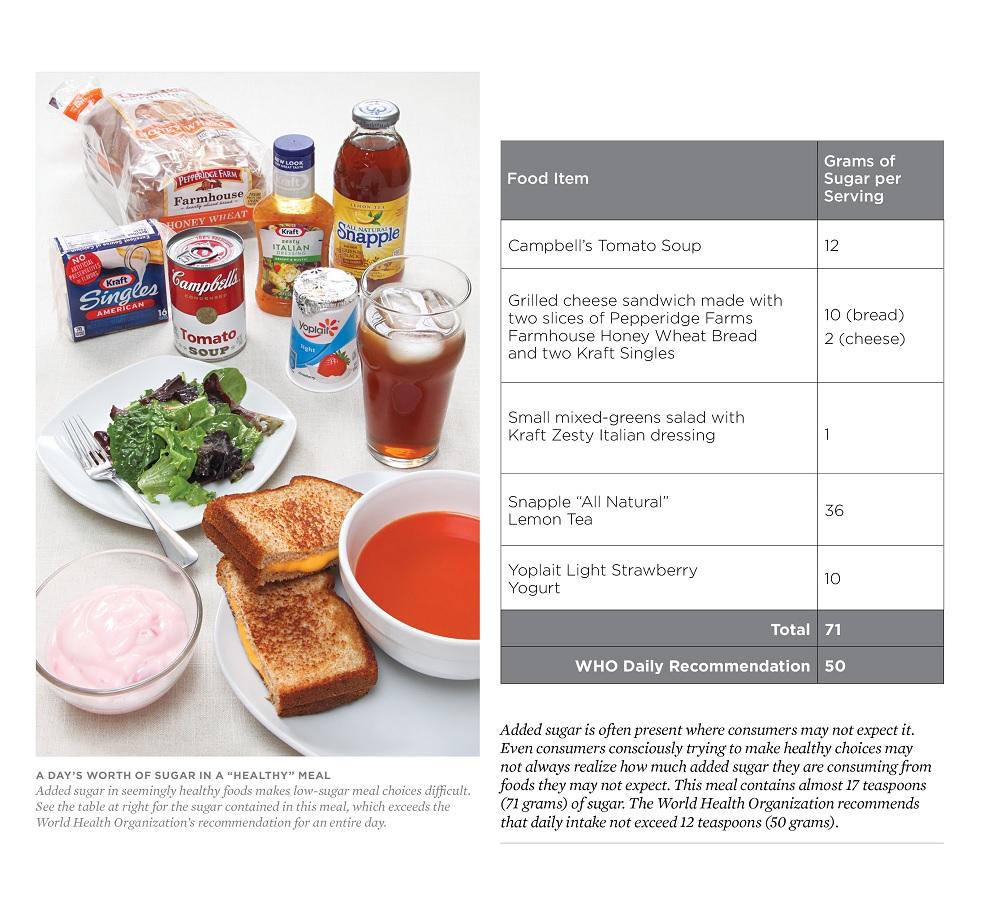The Sour Truth about Added Sugar and Our Health: And What Food Companies Are Doing to Hide It
Moms and dads seek out doctors for advice about their kids’ health. They consult dentists about care for their little ones’ teeth. One thing they are less inclined to do is go to General Mills--the maker of sugary, child-targeted products like Lucky Charms and Go-gurt yogurt-- for the latest science on diabetes or heart disease. Even the most indulgent grandparent isn’t going to seek out guidance from Coca-Cola or PepsiCo for up-to-date information on sugar and dental disease.
Yet, they are weighing in as authority figures on the science. So what are these companies saying about the not-so-sweet science linking excessive added sugar to obesity, diabetes, heart disease, and tooth decay? And what are they the U.S. Departments of Agriculture (USDA) and Health and Human Services (HHS) as they develop the final 2015 Dietary Guidelines for Americans?
The truth is rather sour and may make you think twice before grabbing that box of new “protein” Cheerios with 17 grams of sugar, 4 teaspoons, per serving or that strawberry-cheesecake flavored yogurt with 26 grams. (Twenty-six grams of sugar per serving—that’s 6 ½ teaspoons and a whole day’s worth, according to the American Heart Association!)
Sugar, our health, and the 2015 Dietary Guidelines for Americans
The growing body of science clearly links excessive consumption of added sugar to health problems, including obesity, diabetes, heart disease, and other life threatening diseases. Today, 16 million Americans suffer from heart disease, and 25.8 million are afflicted with diabetes.
Where’s the danger in added sugar? Let’s break it down: Fructose is the kind of sugar responsible for the sweetness of fruit, but when you eat an apple, you also get a lot of fiber that helps your body digest the fructose. Fructose, unlike other sugars (e.g. glucose), is processed in the liver. Sugar added to foods and beverages by manufacturers typically contains fructose that has been extracted and concentrated from beets, corn, and sugarcane. These products lack the fiber that accompanies the fructose found in an apple. The large amounts of it we consume in everything from soda to salad dressing to bread and cereal put stress on our livers. And we can see the disturbing trend linked to fructose-- as our consumption of it has increased over the last several decades, so has the incidence of liver damage. In fact, approximately 31 percent of adults and 13 percent of children have this condition, which can progress to nonalcoholic liver cirrhosis, a life-threatening condition that requires a transplant.
In response to this clear link between sugar and our health, U.S. Dietary Guidelines Advisory Committee (DGAC)--the independent scientific body tasked with making recommendations on the new dietary guideline-- recommended that we consume no more than 10 percent of our daily calories from added sugar. (That’s about 6 teaspoons for women, 9 for men, and even less for young children.) They also recommended that the Nutrition Facts label include a separate line for added sugar and the percent daily value. The label currently only requires manufacturers to list total sugar in grams and no percent daily value.
With a daily limit and more information on our food packaging, we would all be able to make better decisions about what we and our families eat.
Attacking the facts and spreading misinformation
If only it were so simple! Unfortunately, companies like General Mills and PepsiCo—responsible for the ubiquity of products with excessive added sugar in our grocery stores—are aggressively pushing back against the science.
Behind the scenes, major companies and their trade associations—e.g. the Grocery Manufacturers Association (GMA), the American Beverage Association (ABA), and the Sugar Association—have taken a page from Big Tobacco’s playbook. These and other companies and food industry trade groups are striving to influence public health policy by casting doubt on the ever-growing science linking added sugar to obesity, diabetes, heart disease, and, yes, even tooth decay.
For example, in the comment period leading up to the release of the DGAC’s report (where different voices get to weigh in), the GMA has attacked the committee’s legitimacy, insinuating that the recommendations are not “based on the totality of available scientific evidence.” They then urged the committee to consult its own, cheery-picked, industry-funded scientists—a tiny group of individuals all of whom have financial conflicts of interest on sugar.
Ultimately, the goal of food industry’s effort to twist the facts and attack the science is to block policies aimed at protecting Americans’ health whenever it may impact their profit. And there’s nothing new in their tactics outlined here. Over a decade ago, the Sugar Association went so far as to threaten the World Health Organization (WHO) when it released a report recommending a 10 percent daily limit on calorie intake from added sugar. Those familiar with WHO history described sugar industry pressure as “tantamount to blackmail and worse than any pressure exerted by the tobacco lobby.”
The DGAC’s recommendations calling for less sugar consumption and proper labeling of added sugar is a critical step forward for our health—a step the sugar industry is actively opposing. What can we do about it? Combat the industry’s efforts to push their profits over our public health and demand our government follows the science and protects our health. It’s time to turn the tide against the chronic diseases affecting our families and communities across the nation—and ultimately on our children’s future health and well-being.




The views and opinions expressed in this post are those of the author(s) and do not necessarily reflect those of MomsRising.org.
MomsRising.org strongly encourages our readers to post comments in response to blog posts. We value diversity of opinions and perspectives. Our goals for this space are to be educational, thought-provoking, and respectful. So we actively moderate comments and we reserve the right to edit or remove comments that undermine these goals. Thanks!